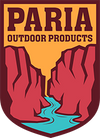Staying hydrated when backpacking is very important to keep your energy up. However, access to clean water is usually limited. The good news is that most trails have plenty of water sources, as long as it is treated. Knowing how to safely and effectively treat water that is available on the trail will keep you hydrated and prevent you from getting ill on the trail.
Methods of Getting Clean Water
Water Filtration
There are many portable water filtration devices that will remove most impurities from water. They may utilize ceramic and/or carbon-based filters. Most systems have filters that could be replaced or backflushed to clean them. The general rule with water filters is that the smaller the particle the system could filter the better. Just remember that some viruses could not be filtered and have to be treated or boiled to get rid of them. It's a good idea to always check the water sources on your upcoming backpacking trips to see if there is anything unusual to keep in mind.
Personal Filters
These are compact filtration systems that filter small amounts of water at a time which is perfect for an individual.
- Straw type: draws directly from the water source by using the unit as a straw.
- Inline filters: could be used as a straw or adopted into a squeeze or bladder system.
Group Filters
Group filtration systems quickly filter and store larger amounts of water suited for a group.
- Pump type: water is pushed through the filter via pumping motion. The MSR MiniWorks is a popular pump filter.
- Gravity type: utilizes gravity to run water through the filter from an elevated container to another container. Our 6L gravity filter system is an excellent example.
- Container type: water is either filtered as it is poured into the container or you would need to fill the container first and filter it as you pour it out.
Water Treatment
Water treatment involves using chemicals to get rid of bacteria and viruses. Unlike filtration, water treatment does not remove impurities or any irregular tastes in the water. Using a coffee filter while gathering or pouring treated water is one way that impurities could be removed.
Water Purification Tablets
Purification tablets are chemical tablets that are dropped into the water and slowly purify the water by killing bacteria and viruses. The main downside is that it takes a while for this process to work, usually 2-4 hours. The tablets can also affect the water’s taste. The two main types of tablets use either chlorine or iodine to treat the water. Katadyn Micropur are an example of water purification tablets.
Ultraviolet Water Treatment Light
The newest treatment system utilizes ultraviolet light to kill bacteria in the water. Water treated this way still needs to be filtered to get rid of impurities. The main downside is that these devices are battery powered. The SteriPen is an example of this type of water treatment device.
Boiling
Boiling is the oldest and most effective water treatment when dealing with bacteria or viruses. Water has to be at a rolling boil for at least a minute for it to be safe. This will mean that you will need a stove and fuel (or campfire) to treat the water. It does not change the water’s taste and will still contain impurities.
Considerations
Here are some other considerations to help you ensure that the water you are drinking is safe:
- Always check if there are any unique conditions that may require a specific type of water treatment method. All of the above methods will work in the United States and Canada, but other countries may have specific bacteria/viruses that could require one method over the other.
- Check the types of water sources that are available on the trail, which could dictate the type of method you use. For example, pump filters could be cumbersome to use with dripping water sources, such as desert springs.
- Put into consideration the terrain difficulty, daytime temperatures, or how far apart the water sources are. This could require additional water storage.
- Running water is generally better than standing/stagnant water.
- Not all filters may filter out viruses. There may be times when you will still need to boil water.
- If the source water is silty, it could easily clog your filters. It would be best to get a good amount of water in a container and have the silt settle overnight. Or you could use a coffee filter to pre-filter the water and remove most of the silt/impurities.
- When drawing water from an open source, try to get the top layer and avoid disturbing the silt at the bottom.
- Some water treatments (especially chemical treatments) can introduce a strong taste to the water.
- Do not let the drinking end of a straw filter or clean water containers touch the untreated water.
- Use filtered water not only for drinking but also for cleaning mugs, utensils or food containers.
- Always clean your water filters once you get home and let them dry before storing them.
Resources
Ultralight Backpacking Water Purification - CleverHiker.com
How to Choose a Water Filter or Purifier












Leave a comment